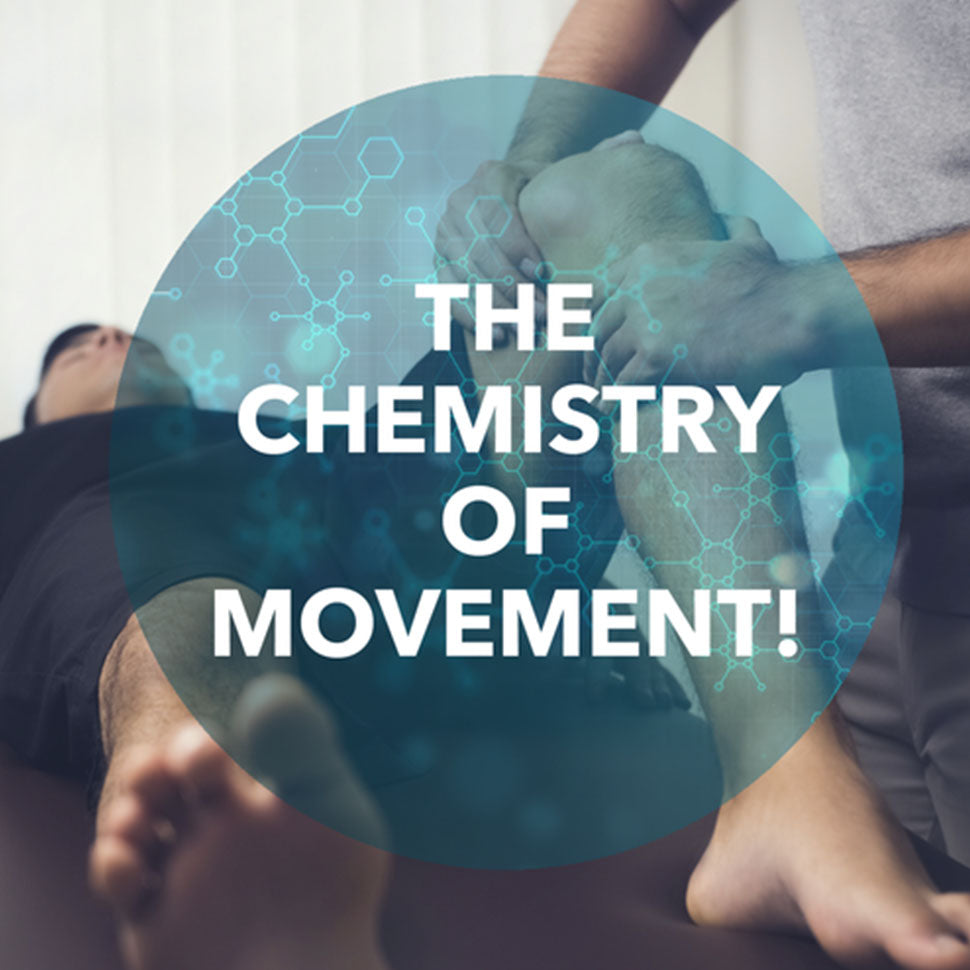The Chemistry of Movement!

Have you ever wondered how much body mechanics affect body chemistry and what it really means to your health?
Dr. David R. Seaman suggests that the best way to look at it is that when you think about the body itself, keep in mind our musculoskeletal tissues are made of chemistry – proteins, fats, carbohydrates, water, vitamins, and minerals.
Therefore, we should stop thinking that body mechanics and our daily movement are distinct from body chemistry.
“When you're moving, the movement itself creates more chemistry so the whole thing is chemical from beginning to end and it doesn't change..."
As a health practitioner, it may be very clear to you that since patients are made of chemistry, any treatment will have a chemical effect. But if your background is not medical, it is important to note that chemistry starts in our nervous and muscular systems, which then allow for the movement of our chemical tissues, which leads to the creation of more chemistry.

If this sounds in any way confusing, what I would like you to get out of it is that the entire idea behind the chemistry of movement changes how one conceptualizes what movement truly is.
If you as a patient or a client do not respond to any physical training, body work, or even medical treatment, you may need to look chemically, specifically in terms of dietary factors, as to what may be taking place in your body and how you can improve your chemistry by proper anti-inflammatory nutrition.
And since you and I are made of chemistry, what I would like to emphasize is how it affects the process of your own healing from either emotional or physical trauma.

It will be determined by the degree to which your body is in an anti-inflammatory or pro-inflammatory state.
That is what truly matters the most.
Whether you have a musculoskeletal condition such as disc herniation or you have been emotionally abused, what you put inside of your body can delay or speed up your healing process.
I believe Dr. Seaman highlighted a very important matter, that “any stress is a stressful event either acutely in a moment or chronically for a protracted period of time. It increases the production of inflammatory chemistry.”
So when you plateau in your physical progress or cannot recover from an injury, it is time to take a look towards what's going on between your ears and, equally important, what you are putting in your mouth every day.
Of course, there may be other pro-inflammatory factors present in your life, but your mental state and nutritional intake are the most important ones, which you are in a full control of.
I invite you to listen to my entire discussion with Dr. Seaman on the chemistry of the movement:
In this video we cover very important subjects including:
- What physiological facts need to be emphasized when we speak about the chemistry of movement to your client or patient
- Why tendinopathy is viewed as a cardiovascular disease
- How consistent loading affects one's body (e.g., in a golf swing)
- How osteoarthritis and tendon pathology are actually a wear and lack of repair condition
- How omega-6 fatty acids affect our joints, tendons, mitochondria, and skeletal muscles
- What knocks out nitric oxide in the vessel wall
- How potassium and magnesium play an important role in your diet
- How fibroblasts regulate inflammation
In the interview, we also address the health of younger kids and how parents can assist them to make better decisions on a daily basis, regardless of their financial situation. This is an important subject to all of us, as kids are the future of this world.
I hope you will take your time to watch the interview.
As always I invite you to comment and ask any additional questions you may have.


